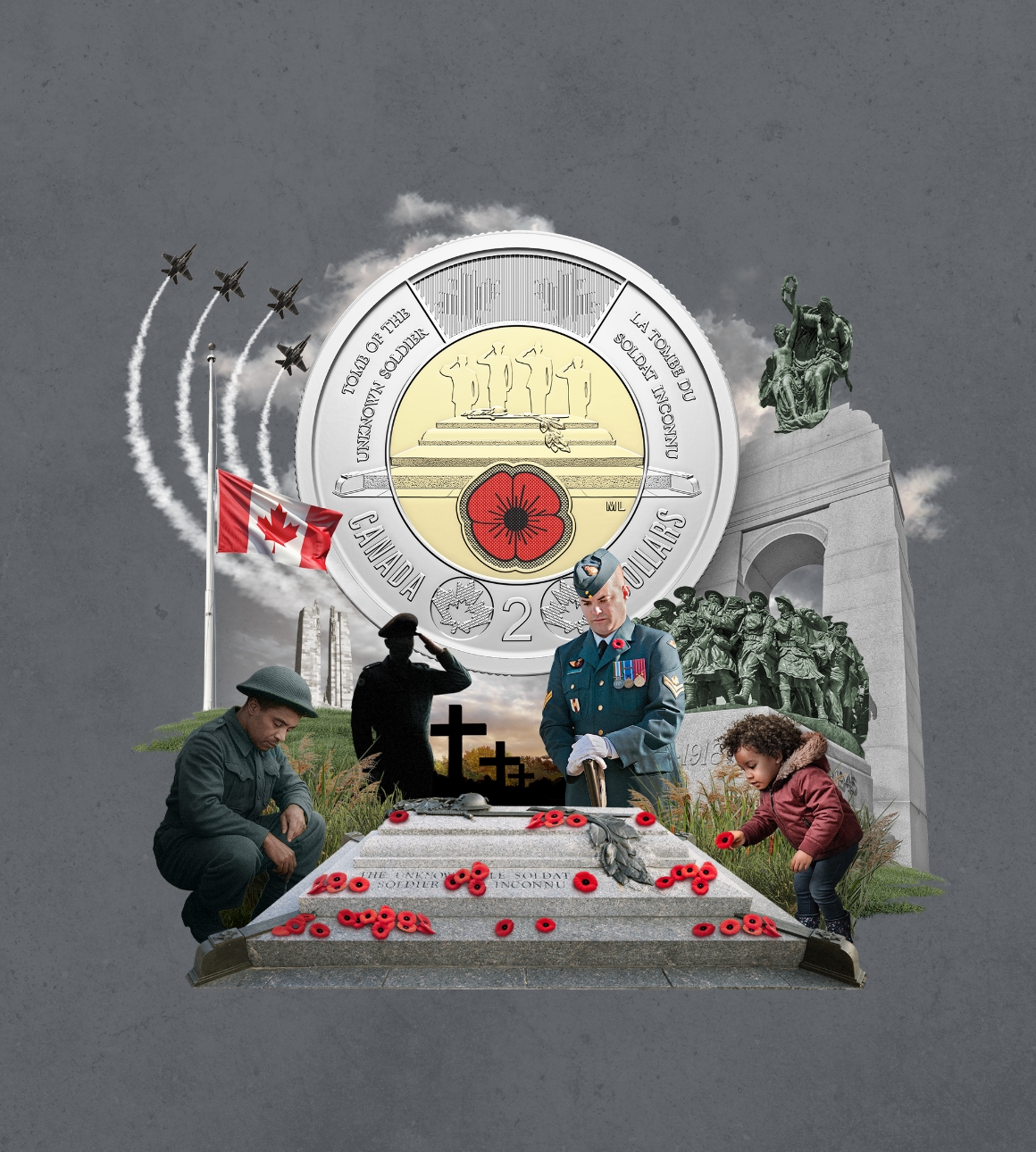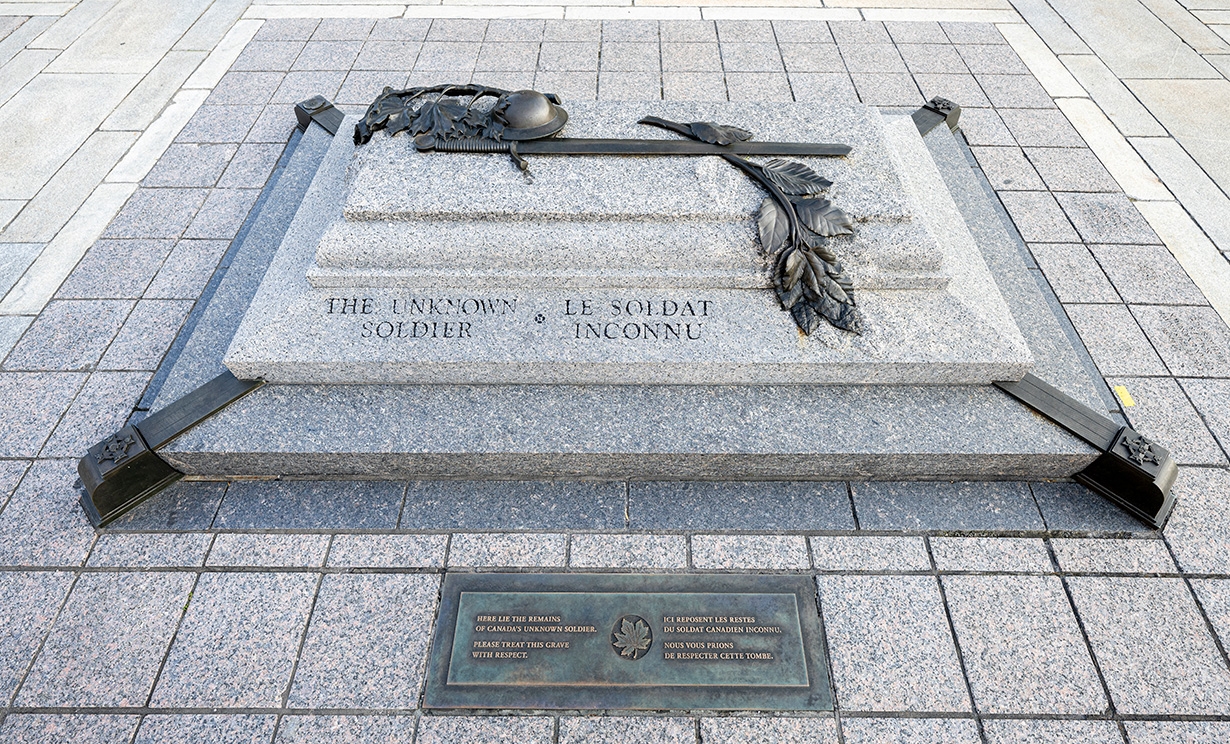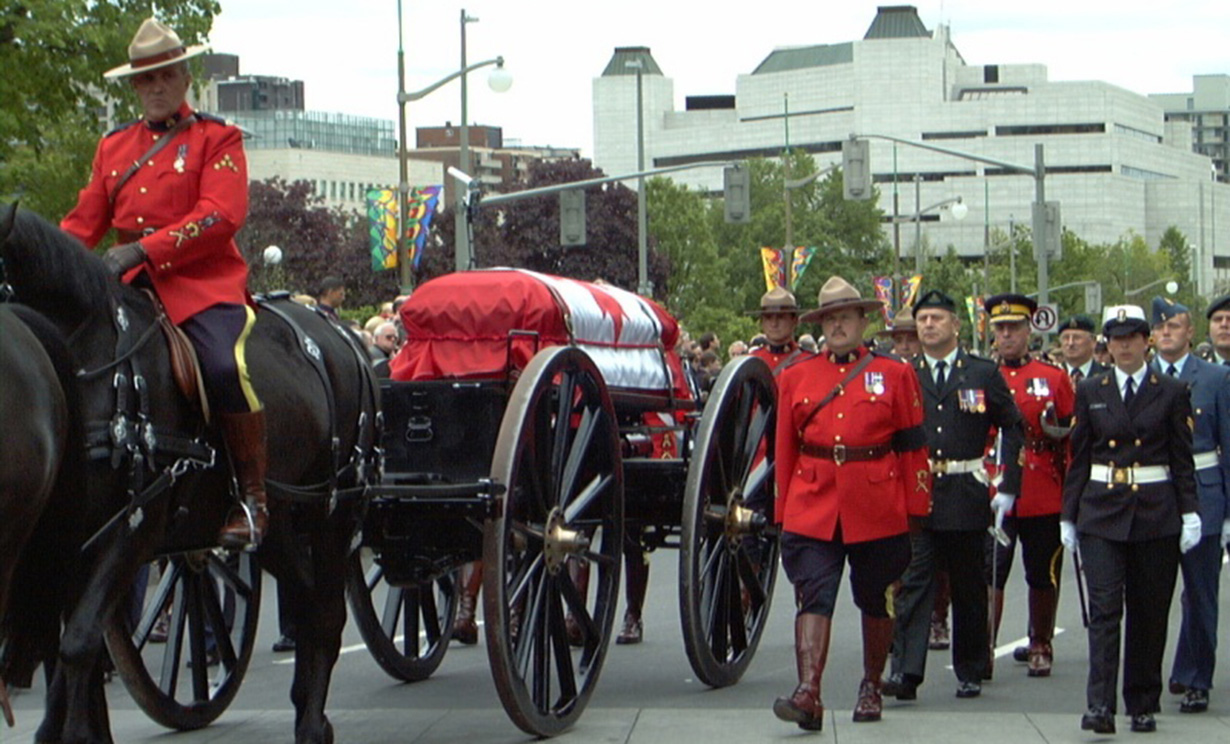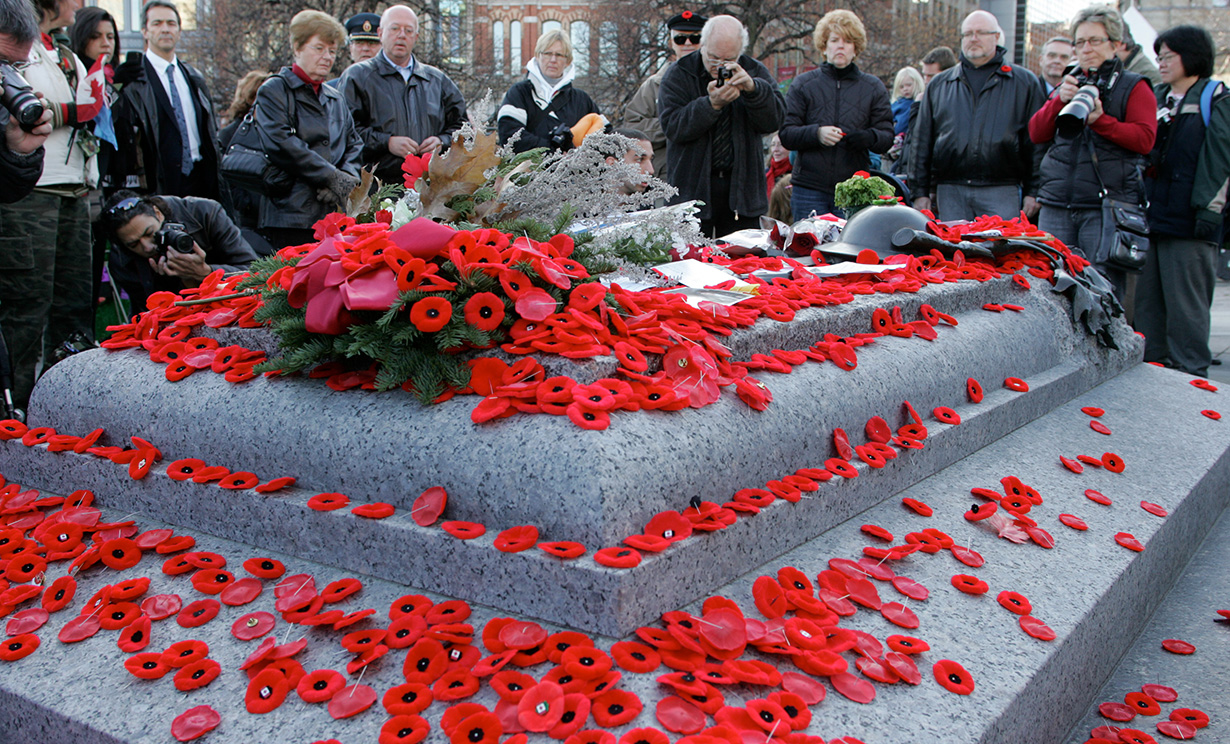Remembering the Repatriation: Witnessing the Return of Canada’s Unknown Soldier
- Nov 04, 2025
- History
- 5 minute read
Twenty-five years ago, in a unifying effort, Canada’s Unknown Soldier was brought home. Led by The Royal Canadian Legion, many groups supported the process—veterans, the military, government departments, agencies, and more—all working together to make the repatriation a reality.
Although the efforts spanned countless individuals, there was one person who initiated the project and oversaw it from start to finish—and we recently had the opportunity to speak with him. Brigadier-General (Ret’d) Duane Daly was the Past Dominion Secretary (National Executive Director) of The Royal Canadian Legion, and the driving force behind the operation.
Keep reading to discover how the project came together behind the scenes, straight from the source.


Twenty-five years ago, in a unifying effort, Canada’s Unknown Soldier was brought home. Led by The Royal Canadian Legion, many groups supported the process—veterans, the military, government departments, agencies, and more—all working together to make the repatriation a reality.
Although the efforts spanned countless individuals, there was one person who initiated the project and oversaw it from start to finish—and we recently had the opportunity to speak with him. Brigadier-General (Ret’d) Duane Daly was the Past Dominion Secretary (National Executive Director) of The Royal Canadian Legion, and the driving force behind the operation.
Keep reading to discover how the project came together behind the scenes, straight from the source.

Bringing Canada’s Unknown Soldier Home
Brigadier-General (Ret’d) Duane Daly served with the Royal Canadian Air Force for 34 years before becoming the Dominion Secretary of The Royal Canadian Legion in 1995. This position, head of The Legion’s professional staff, saw him at the helm of an organization with just over 500,000 members—many of whom were volunteers (today, The Legion has 270,000 members).
“When I joined The Legion in 1995, I was very optimistic that there were many opportunities for enhancing the promotion of remembrance in Canada,” says Daly.
Initial conversations with Government indicated that Canadians were honoured at that time through the Tomb of the Unknown Warrior in Britain, which included the Commonwealth in its memorialization. Australia, however, had established their own Tomb of the Unknown Soldier in 1993—reinforcing the question of why Canada didn’t have its own. With that, the journey of bringing home Canada’s Unknown Soldier began.
“It was against this background […] that I approached the executives of The Legion and explained the situation. […] They formally agreed that The Legion would take up the responsibility of bringing our Soldier home.”
With a baseline financial commitment from The Legion to put towards the project, Daly approached the National Capital Commission (NCC) to secure a location for the Tomb in the centre of downtown Ottawa. Although the NCC was supportive, they couldn’t approve a location near Parliament—that responsibility lay within the Department of Public Works.

“With that, I went to the fellow Veterans organizations: the National Council of Veterans, the Korean Veterans, the Army/Navy Veterans in Canada, the Veterans of the Second World War, Naval Association of Canada, the Air Force Association of Canada and others. I […] explained that The Legion would like to move forward in this direction of establishing a Tomb of the Unknown Soldier and that we would need [their] support.”
The Veterans organizations were supportive of the project, and after additionally securing endorsement and support within the Department of National Defence (DND) and Veterans Affairs, Daly formed the Tomb of the Unknown Soldier Working Group. The group was comprised of representatives from these organizations as well as Public Works and the NCC.
“In about June of 1999, after we had started this project in 1996, we finally received positive endorsement from departments of government, [and] funding approval to proceed. And we did.”
It was decided that the Tomb would be located at the National War Memorial, and, with the support of the Canadian division of the Commonwealth War Graves Commission, the recovered remains of a Canadian Unknown Soldier from Cabaret-Rouge British Cemetery near Vimy Ridge would be reinterred there. A design similar to that of the altar at the Vimy Memorial in France was chosen for the Tomb, and all the requirements for the project were finalized.
“There were people in the government who led departments, such as the Minister of Veterans Affairs, the Minister of Defence, and the Minister of Public Works, who really supported it and saw that it was going to be a significant public event and that it was in the interest of all Canadians. […] And thank God for the many public servants who bent over backwards in helping to progress the project, because they made the Tomb of the Unknown Soldier a reality.”

A National Commemoration
The Tomb of the Unknown Soldier Working Group’s monumental undertaking and dedication led to the ceremony and reinternment of Canada’s Unknown Soldier at the National War Memorial in Ottawa on May 28, 2000.
“It was a great day for Veterans, a great day for Canadians, to be able to actually recognize and commemorate the sacrifice of those who had died in war. Seeing Canadians pay their respects on that day was very emotional for me and all concerned.”
Escorted by the RCMP Mounted Guard from the Hall of Honour on Parliament Hill to the National War Memorial in a horse-drawn gun carriage, Canada’s Unknown Soldier was reinterred with full honours during a national ceremony watched by Canadians across the country.
“It all led to the significance of the day, and the significance of the ceremony itself. We also had representation from the Indigenous community across Canada. They were able to pour tobacco and soil on the grave […], just like we had soil from all 10 provinces and the three territories poured into the grave before we sealed it.”

A Legacy Without End
Today, the Tomb of the Unknown Soldier at the National War Memorial is a focal point for national remembrance.
“[The Unknown Soldier] represents all those soldiers we have lost in unknown graves, and all those who died in war and in the pursuit of Peace. His Tomb will forever stand as the Legacy of Remembrance for The Legion and all Canadians.”
Now, on the 25th anniversary of the repatriation of Canada’s Unknown Soldier, a commemorative $2 circulation coin has been minted to honour all those who serve and have served their country.
“[The coin] contributes to how we remind Canadians of our past, of our very, very distinguished past, of the sacrifices of the past. […] A circulation coin that they will have in their hand at any time of the day, any day of the year, which will continue to tell that message. They don't necessarily have to be in Ottawa to experience that feeling of remembrance and appreciation.”
Salute the One Who Represents the Many
Though their name and story remain unknown, Canada’s Unknown Soldier stands as a powerful symbol of courage, unity, and of our enduring respect for all who have served and continue to serve our country. Find the Honouring Canada’s Unknown Soldier commemorative $2 circulation coin in your change today.
The Poppy Design is a registered trademark of The Royal Canadian Legion (Dominion Command) and is used under licence.
--
Images 1 and 2 Photo Credit: Richard Lawrence Photography
Images 3 and 4 Photo Credit: Veterans Affairs Canada



